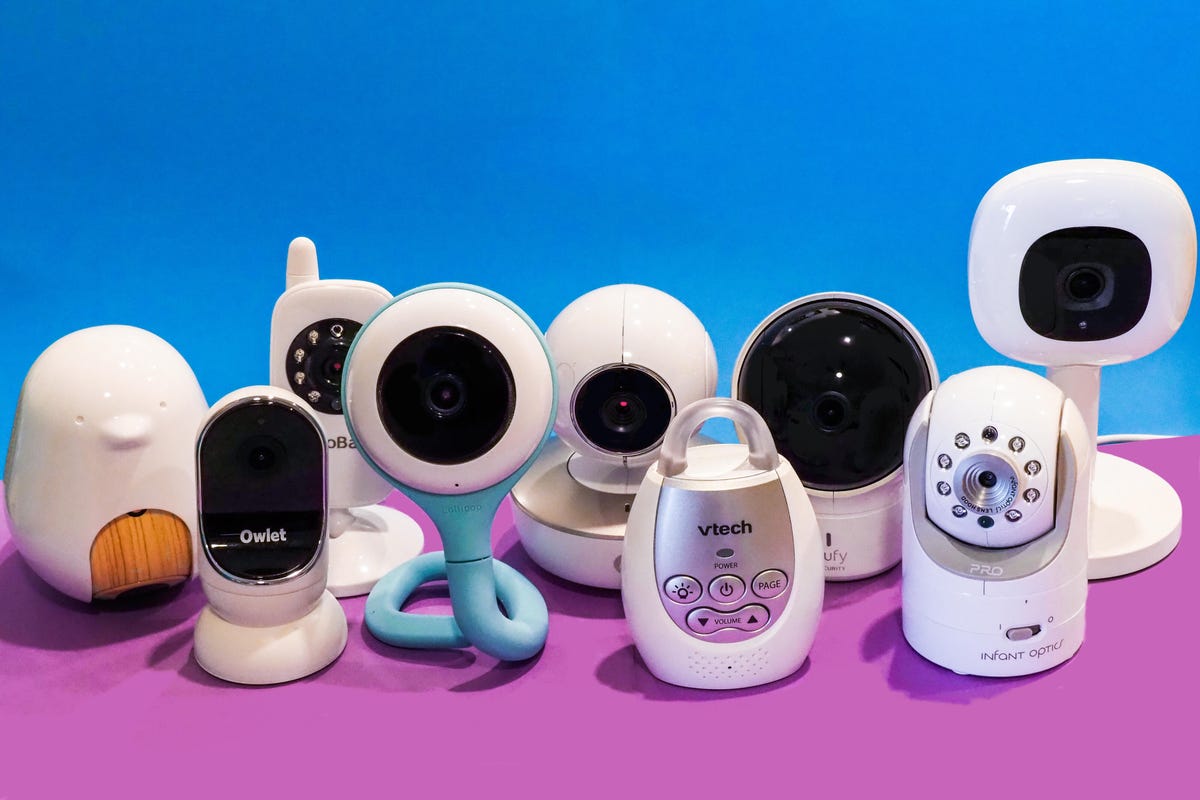Wi-Fi baby monitors
Wi-Fi monitors are great if you want to be able to check in on your baby from anywhere. “Range” is not a concern with Wi-Fi monitors, because you can tap into the feed from your phone wherever you get an internet connection. When testing Wi-Fi monitors, I was able to spy on my son from the airport as I prepared to leave on a work trip before he’d woken up for the day. Wi-Fi monitors also tend to have more bells and whistles, with smartphone apps and sleep-tracking capabilities that will appeal to data geeks.
The downside of using a Wi-Fi monitor, besides the potential for a security breach, is connectivity issues. When I tested these models, I lived in an apartment building with lots of competing Wi-Fi signals and was at the mercy of my building’s AT&T contract when it came to broadband strength. I experienced a lot of trouble setting up the Wi-Fi monitors I tested and once online, several of them lost connectivity in the middle of the night, leaving me with no way to see or hear my son. However, when I tested the same monitors in a large house (with a stronger signal), I experienced no issues. Your mileage with Wi-Fi monitors will vary depending on the density of your living situation and the type of internet connection you use (DSL, fiber and so on). Individual monitors also perform better or worse depending on the quality of their Wi-Fi radio.
Read more: How to Turn an Old Tablet or Phone Into a Baby Monitor

From left: Cubo Ai Plus Smart Baby Monitor, Owlet Cam, Hellobaby Video Baby Monitor HB32, Lollipop Smart Baby Camera, Motorola MBP50-G, VTech DM221 Audio Baby Monitor, Eufy SpaceView Pro, Infant Optics DXR-8 Pro and Nanit Pro Camera.
Non-Wi-Fi video baby monitors
Because of my internet connectivity issues, I prefer a baby monitor that transmits via radio frequency. Another benefit of this type of monitor is the ease of setup — many are plug-and-play, with no need to download an app or pair anything. A dedicated parent unit frees your phone for whatever else you want to use your phone for and your risk of hacking goes way down. Non-Wi-Fi models also tend to include remote pan, tilt and zoom capabilities, which allow you to adjust the positioning of the camera and get a view of different parts of your child’s room without actually entering it. None of the Wi-Fi monitors I tested could pan or tilt remotely.
The audio and video output of the non-Wi-Fi models did tend to be slightly lower quality than the ones that feed to your smartphone and several of them were just too quiet, even at the loudest volume. And of course, range is a concern with a non-Wi-Fi baby monitor. The ones I tested all promise up to 1,000 feet, but if your house is large or the signal has several walls to traverse, you may still experience a spotty connection.
Wearable smart monitors and audio-only baby monitors
If your budget is tight, an audio-only monitor offers peace of mind without the price tag. Most parents today, however, will opt for a video monitor, especially if you’ll be moving your baby to their own room before the American Academy of Pediatrics’ official recommendation of 12 months.
Wearable devices that monitor heart rate, blood oxygen, breathing, sleep patterns and other metrics bring an added layer of peace of mind, but experts caution that they should be taken with a grain of salt and shouldn’t supersede safe sleep habits. The wearables I tested were bundled with their own video monitor. Smart monitors tend to be expensive and sometimes unnecessarily complicated, but they just might help you get a little extra sleep yourself.
